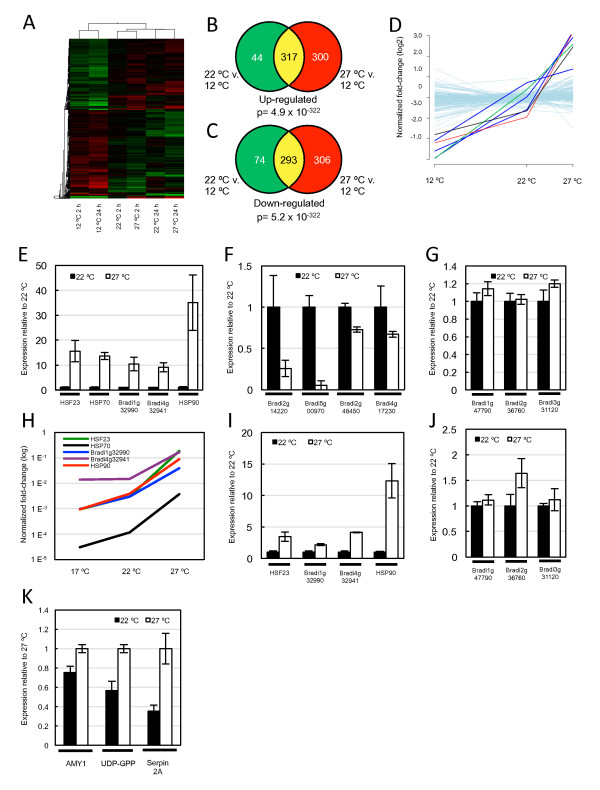Figure 3.

The Brachypodiumtranscriptome responds to changes in ambient temperature. (a) Transcript profiling experiment shows a robust response to changes in ambient temperature in vegetative seedlings. The heat map depicts all differentially expressed genes (DEGs) with at least two-fold change in any of the temperature treatments as determined from two-way ANOVA (P for temperature effect ≤ 0.05). Expression levels of up-regulated genes are in shades of red and of down-regulated genes in shades of green. (b,c) Venn diagrams of total numbers of up-regulated (b) or down-regulated (c) DEGs in vegetative seedlings after 24 h shift to either 22°C (green), 27°C (red), or in both temperatures (yellow). The two-tailed P-values for the significance of the overlap represented under the Venn diagrams have been calculated using Fisher's exact test. (d)HSF23 (green line), HSP70 (black line) and HSP90 (red line) are induced strongly with increasing temperature, in contrast to other heat-shock genes (grey) that do not respond significantly over the temperature range assessed. (e-g) Quantitative real-time PCR (qRT-PCR) analysis of genes that are up-regulated by increasing temperature (e), down-regulated (f) or show constant expression (g) in vegetative seedlings 24 h after temperature-shift. (h)qRT-PCR analysis of up-regulated genes in plants grown constantly at either 17°C, 22°C or 27°C. (i,j)qRT-PCR analysis of genes in developing grain that are up-regulated by increasing temperature (i), or remain constant within the temperature range (j). (k)qRT-PCR analysis of genes that are up-regulated by temperature with known roles in developing grain. Data are from at least three biological replicates.
